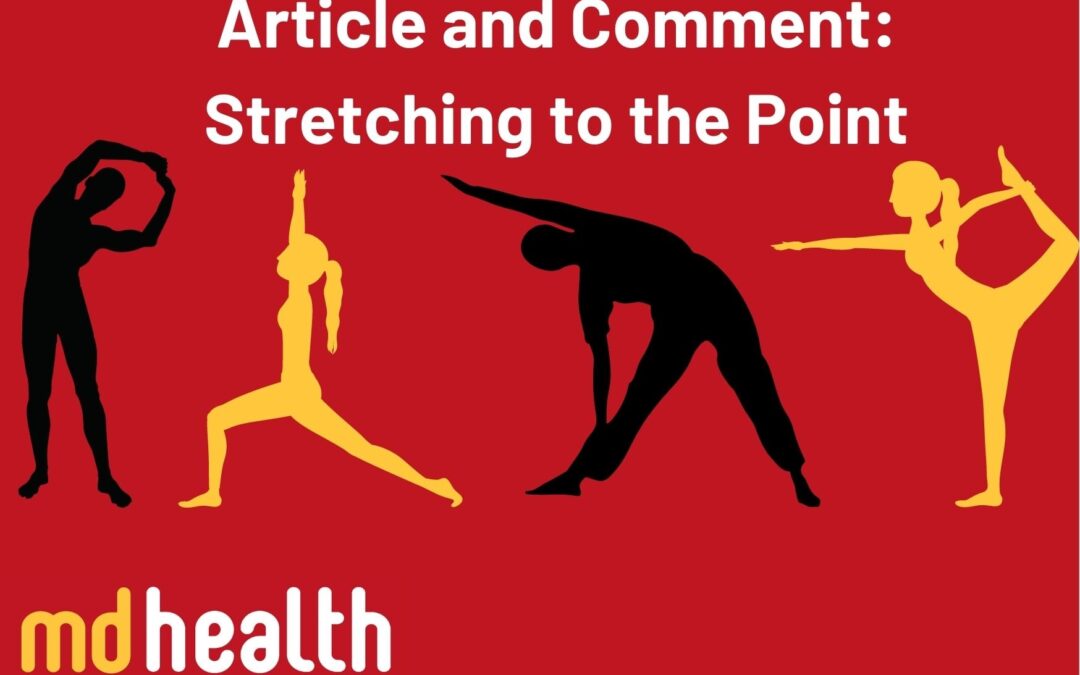Article and comment – Stretching the point
Since my early days training as a physiotherapist (Late 1990’s), and to this day, there has been a relatively mixed message on the benefits, or lack of, from stretching. However, in general over the last few years, there has been a more consistent direction. This direction points to the usefulness of stretching. This article is a well research and presented overview on these benefits:
The most important benefits of stretching of muscles for joint and muscle protection:
• In the medium term (6-8 weeks), regular static stretching of muscles doesn’t actually change the length of muscle or flexibility. What is does do is reduce the nervous response to stretching. This then allows the body to tolerate the stretch feeling more, rather than improving the actual muscle flexibility.
• Being able to stretch to the extremes of movement is often a result of genetics (20% of people are hypermobile). It is not a direct result of stretching. However, there is little study on the effect of ongoing stretching over a very long period of time. For example, the stretching performed by ballet dancers and gymnasts.
• In addition, most movements required in everyday life rarely require great flexibility. Most movements are performed in the mid range of a joint’s movement. This is where control is a bigger limiting factor to function, rather than flexibility. This includes walking, running etc.
• Stretching and flexibility without control is a problem. When muscles are stretched towards the end of range, without good strength and control of range, your muscles and joints are vulnerable to injury. The best way to obtain great range of movement with great control, is to aim to get range with lengthening movements that require control. These include eccentric activities into the desired range, or with active sustained hold, such as those performed during yoga.
• From my experience however, stretching the capsule of joints when required is different. This is not an active structure, such as muscle, and when restricting required range of movement, should be stretched or mobilised in conjunction with strengthening around the joint (Especially after operations such as a hip or knee replacement, where desired range of movement needs to be achieved to get the most from the operation).
The other surprising benefits of stretching:
• Stretching of the muscles reduces the risk of the build up of atherosclerotic plaques in the blood vessels. It even reduces the risk more that other exercises, such as strength training (by 23%). The potential mechanism for this may be that stretching the muscles also improves the elasticity of the blood vessels in the area.
• Stretching can reduce the inflammation in the area and speed up healing by increasing the levels of Resolvin. This is a natural chemical used by the body to turn off the inflammatory response.
So, the interesting aspect of stretching is that is has a place in the injury management. This is due to it reducing the inflammatory management of the healing process. However it’s most obvious used role improving flexibility is best achieved through active movements. These include eccentric exercises and static holds, which involve improve muscle control at the same time as improving active, control range of function joint movement.
Williams, C (2021) Stretching the point. New Scientist, 17th July 2021, No. 3343. P34-38.
Do you have any questions?
- Call us on (03) 9857 0644 or (07) 3505 1494 (Paddington)
- Email us at admin@mdhealth.com.au
- Check out our other blog posts here
Our clinical staff would be happy to have chat if you have any questions.



